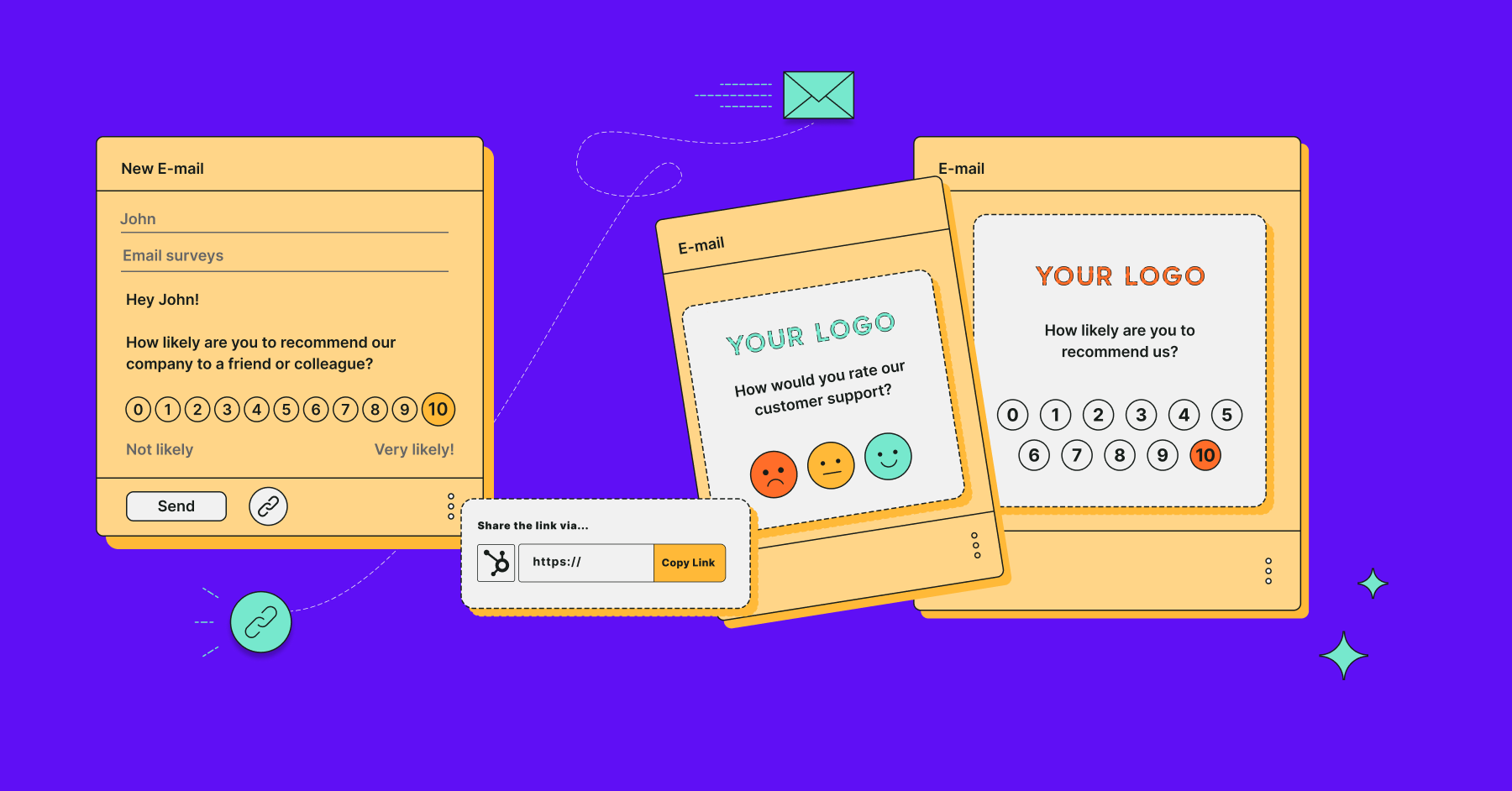Product feedback lets you understand what customers want and need, so you can create products they love.
Asking for feedback helps you measure customer satisfaction, identify areas for improvement, and prioritize features on your product roadmap.
In this article, we go over how successful companies collect feedback to their best advantage as well as best practices for SaaS businesses.
The nature of your product determines the optimal way of collecting feedback. Check out these creative ideas that can inspire you to collect feedback and boost the metrics that are most important to you.
What is Product Feedback?
Product feedback is any insights on the topic of a product, including
- how satisfied a customer is and why
- what potential bugs customers struggle with
- the types of features customers would like to see next
- how customers feel about the pricing
- and more
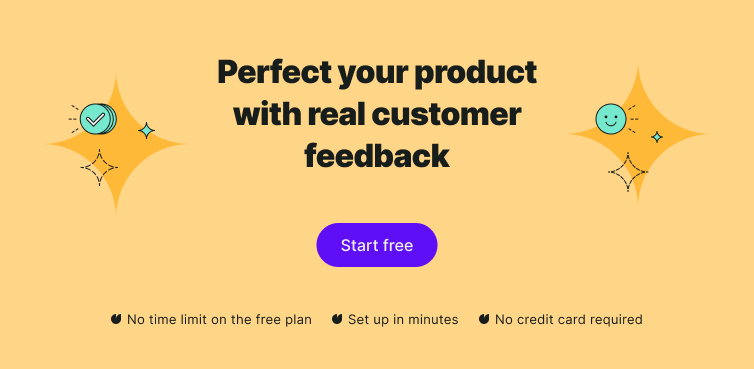
Product feedback can take many forms, from a simple microsurvey with a Smiley Scale to a full-on testimonial about a customer’s experience.
This type of user feedback should be at the center of your product development strategy. It comes from people who actually use the product for the purposes it was intended for.
If you fail to collect product feedback from your customers, you won’t be able to accurately identify their needs or offer effective solutions. And these things are the biggest drivers of customer loyalty, retention, and satisfaction.
Real-Life Product Feedback Examples
The way you collect product feedback depends on the nature of your product. In no particular order, let’s have a look at these interesting use cases for gathering feedback related to your product.
Google’s search engine is about finding the most appropriate results for a query and listing them in order of relevance. The user then clicks on a result and leaves Google’s platform.
So, if you think about it, what Google offers as its product (surpassing other search engines like Bing and Yahoo by miles) is its search algorithm. Google claims the goal of the algorithm is to “end search”. This means a user should not have to click on more than one result to find their desired answer.
They judge how well the product performs by what results are clicked on, what the bounce rate is like, and whether the user stops their search. So even just by clicking a result on the search page, you are giving the search mogul information about your experience.
Google perfects this data collection by asking for solicited feedback as well.
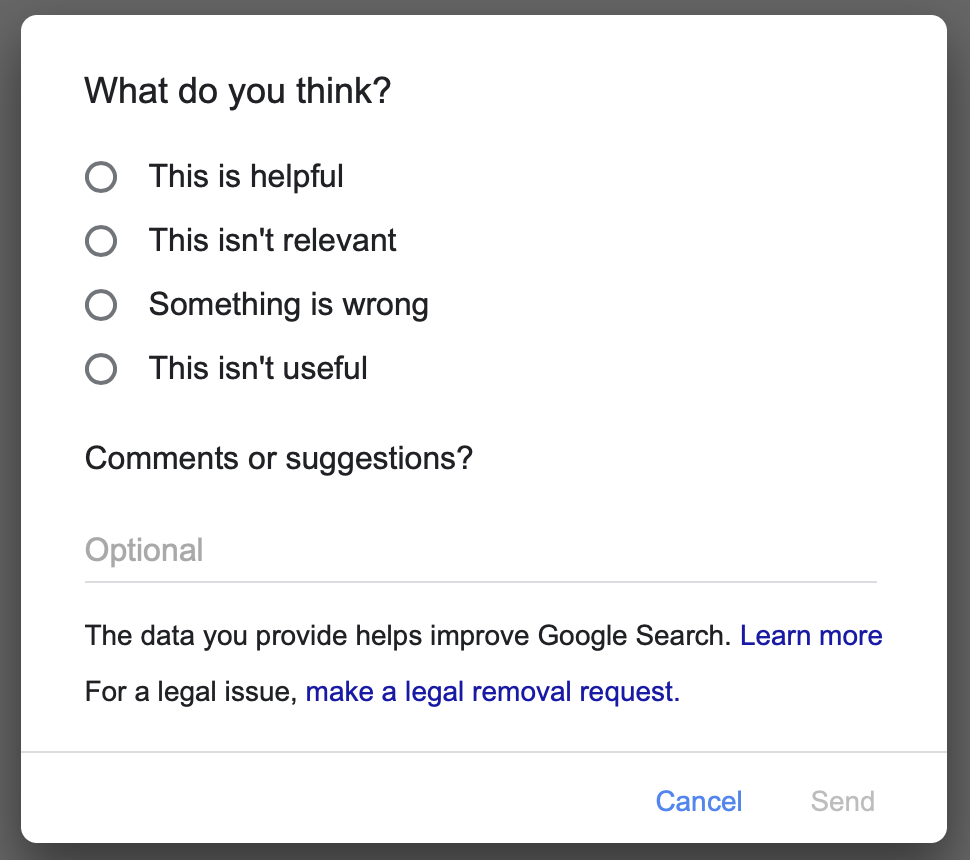
You may have come across their microsurveys that ask how helpful, useful, or relevant the information you found was.
The search engine uses these two sources of information to identify what the algorithm does well and what could possibly be improved.
YouTube
YouTube’s algorithm is not as vital a part of its service as Google's. Users stay within the platform when they watch videos. In this case, it is the experience of content consumption that YouTube wants to perfect, not merely the YouTube search feature.
YouTube uses metrics like watch time, audience retention, and video view to perfect its algorithm. But it also makes use of super fast microsurveys in the form of “thumbs up” and “thumbs down” to learn about viewers’ experiences.

This helps them adjust suggestions to users as the content they give a “thumbs up” is likely the type of content they want to see more. In fact, users were having so many negative experiences until recently, that they began “dislike bombing” videos.
This influenced the platform to remove the negative vote count and (allegedly) adjust the algorithm to push content that is “liked” rather than just consumed.
Uber
Uber is a mobility service provider. Drivers can register their private cars and users can book rides via an app.
The app collects two-way feedback in real-time. Both users and drivers are rated. This way Uber can collect information about the satisfaction of both groups.
Customers can rate their satisfaction on a 5-point rating scale and provide additional comments, whether it be positive or negative feedback. Drivers accrue a score, and once it falls beneath a certain limit, they can be deactivated for poor service.
On the other hand, drivers can report whether a user is problematic which also gives the company security and insights on how the product can be improved.
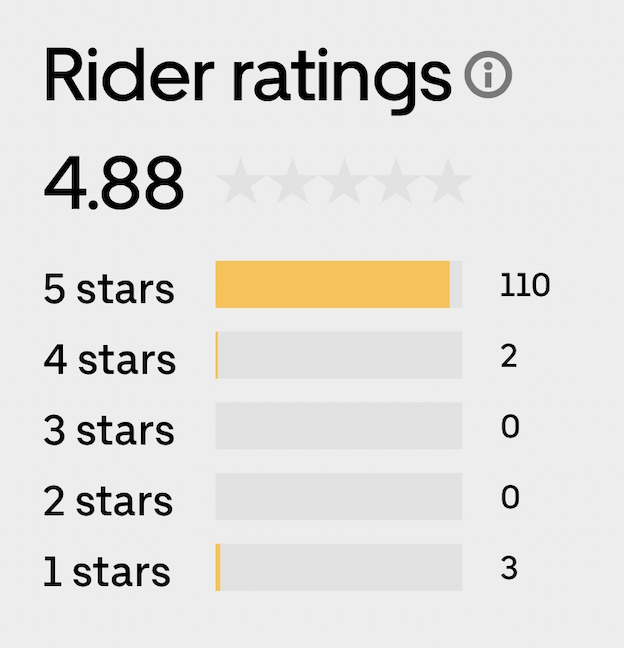
This is very helpful, as their actual product is not the app, it is the service provided by third-party drivers. By hearing both sides, Uber can use the insights to ensure all users and drivers have the best experience.
Amazon
Amazon is an online shopping platform where users can both buy and sell products. They mainly collect customer feedback from those who purchase a product.
After a completed purchase, a buyer has 90 days to leave product and seller reviews, feedback, and ratings. Customers can comment on the response speed, level of communication, resolution, and product quality.
This system is automated in a way that regulates the purchasing experience. Sellers who receive low-quality ratings don’t get a boost in search and are likely to be disregarded by potential buyers. There is also a filter to sort results by seller rating.
This is advantageous to Amazon, as they don’t have direct influence over the quality of service or products from the people who list them. However, when a customer is dissatisfied, they may judge the shopping platform for the poor experience.
Survicate
Survicate helps collect customer feedback across the entire journey, but there is a more traditional approach - website and chatbot surveys. This method works great for any SaaS business or company operating in the online world.
We use a combination of our own website surveys, which show up as a pop-up on the site, and Intercom messenger surveys. Both can be easily set up within our editor with no coding required.
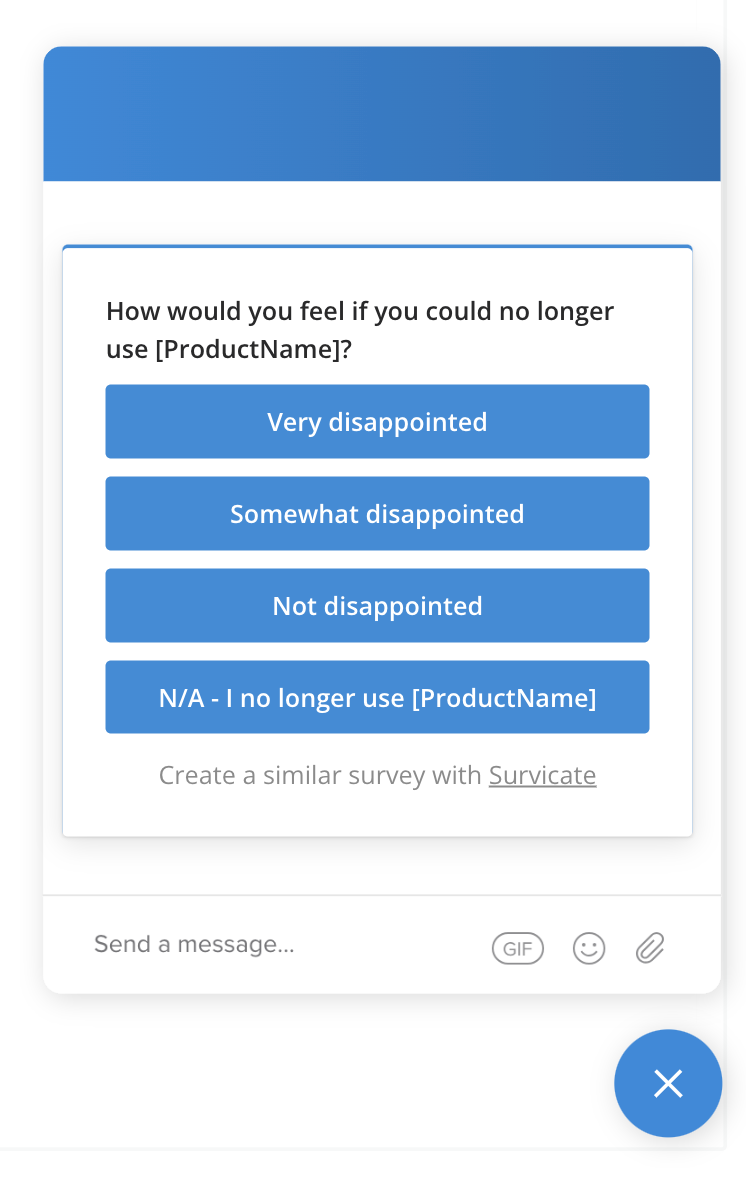
We use the Survicate and Intercom integration to identify respondents and save responses as either tags or attributes on their Intercom profiles. We also use the capabilities of connecting with Slack to get real-time notifications about the customer experience.
To analyze results, we use our integration with Google Analytics and often arrange Intercom campaigns to set up user interviews and testimonials. Those are particularly insightful in terms of features existing customers expect.
How to Get Product Feedback
In order to acquire product feedback, you have to ask for it. There are many methods of distributing such feedback forms, including email and link surveys, website surveys, in-product surveys, mobile app surveys, and chatbot surveys.
Set up a survey with a great feedback tool and keep them simple whenever possible. Survicate templates are optimized for the best response rates, so if you’re looking for a quick and easy solution, sign up for a free trial and avoid survey fatigue.
Best Product Feedback Surveys (with Templates)
Product feedback surveys can help you get insightful data at any point of your product journey, beginning with development and even post-release.
Customers who give you first-hand insights are the best source of information on how your product is doing, what direction you should be heading towards, and how likely you are to succeed.
The following survey types will give you a comprehensive understanding of the intricacies of your market success.
Onboarding experience survey
Honest feedback concerning a customer’s onboarding experience helps you determine whether the flow you designed is optimal enough to keep customers.
Customers, ie. those who have not yet purchased a subscription plan, tend to have higher expectations than paying users. It’s important to make the onboarding experience user-friendly, intuitive, and informative for the best conversion rates.
Even the most skilled product managers won’t be able to test this step in the customer journey accurately. They have too much knowledge about your tool or service. That’s why gathering customers' insights is key here.
Product experience survey
A product experience survey lets you learn what users enjoy about your product and how often they take advantage of it.
These feedback forms help discover what users value most about a product. These insights are great for marketers to use in ad and reach-out campaigns. Our template also includes an NPS question for a bird’s eye view of your customer satisfaction.
Product-market fit survey
As the name suggests, a product-market fit survey examines how well your product satisfies strong market demand. Positive feedback to this survey means you identified your market, and the product you offer fulfills the need.
It’s always hard to determine benchmarks, but according to Sean Ellis, who developed the metric, you should aim for 40% of positive responses.
Feedback to this survey will help optimize your product, boost growth, and ensure profit continuity.
User experience survey
A user experience survey will tell you why customers behave the way they do and how they feel about their interaction with you. While there are more targeted surveys that measure customer service, this type of feedback can also provide insights on the topic.
This survey will give you information on what customers might expect from your product, customer support, and UX.
Software evaluation survey
A software evaluation survey evaluates how particular areas of your product contribute to its success.
The insights gathered with this feedback form will help you
- drive product development in the right direction
- evaluate your software’s ease of use
- come up with ideas on design attractiveness
- examine how users feel about the security you provide
Pricing feedback survey
Running a pricing feedback survey can help you set the optimal price for your product. One that will be a compromise between the maximum profit and the most your users are willing to pay for extended features.
Use this survey to gauge how your users feel about your pricing in comparison to your competition. This feedback form is usually most useful for new companies who haven’t gotten their pricing down yet.
But you can also use this survey after introducing new features to find out whether your users value your product more than when they started using it.
B2B customer satisfaction survey
Customer satisfaction is just as important for B2B as it is for B2C. Learn how your customers feel about your customer service, the reliability of your product, the value for money you offer, how user-friendly your website is, and the security you ensure for your users.
Data collected from a B2B customer satisfaction survey can help you prevent churn, boost customer loyalty, and work towards long-lasting business relationships.
Product testing survey
Online services and products need to be constantly developing. This means you are likely working on new features.
A product testing survey is a great tool to measure how well you designed a new feature. Run this survey before launch to learn about bugs and struggles your paying customers might face.
Get your product roadmap right and secure yourself a smooth product launch.
Customer satisfaction surveys
Customer Satisfaction (CSAT), Customer Effort Score (CES), and Net Promoter Score (NPS) surveys can also get a product manager valuable data. They help identify issues and improve customer satisfaction in general.
A CSAT survey concentrates on general satisfaction with your brand.
An NPS survey is a great indicator of customer retention.
A CES survey helps identify key struggles users face with your customer service, product, and website.
Product Feedback: Closing the Loop
Collecting feedback is the first step towards improving your product, boosting conversion rates, and making sure your customers stay with you. Once you get that precious data, you want to use it to its best advantage to avoid wasting your budget, time, and opportunities.
An effective feedback loop relies on taking the best advantage of the insights your customers provide. Good product feedback tools have inbuilt capabilities that help analyze customer feedback data and use it to improve your product and services.
Survey results can help you spot trends, patterns, and relevant business information. Let’s have a look at how easy it is to analyze customer feedback with Survicate.
First of all, you get a general rundown of the number of responses, the date of the last responses, completion rate, and total views.
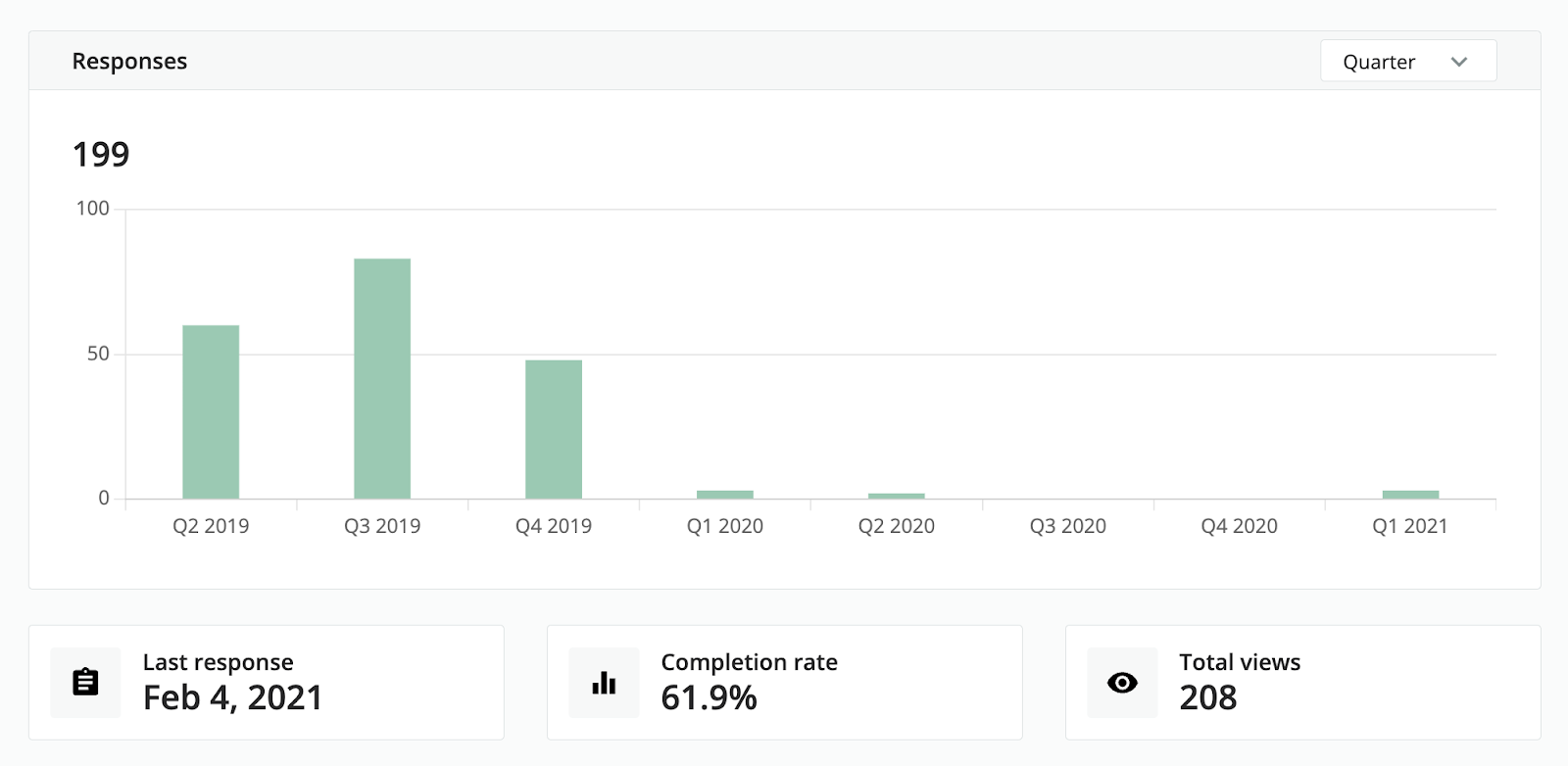
Single-answer selection questions are presented with percentages of how your customers responded.
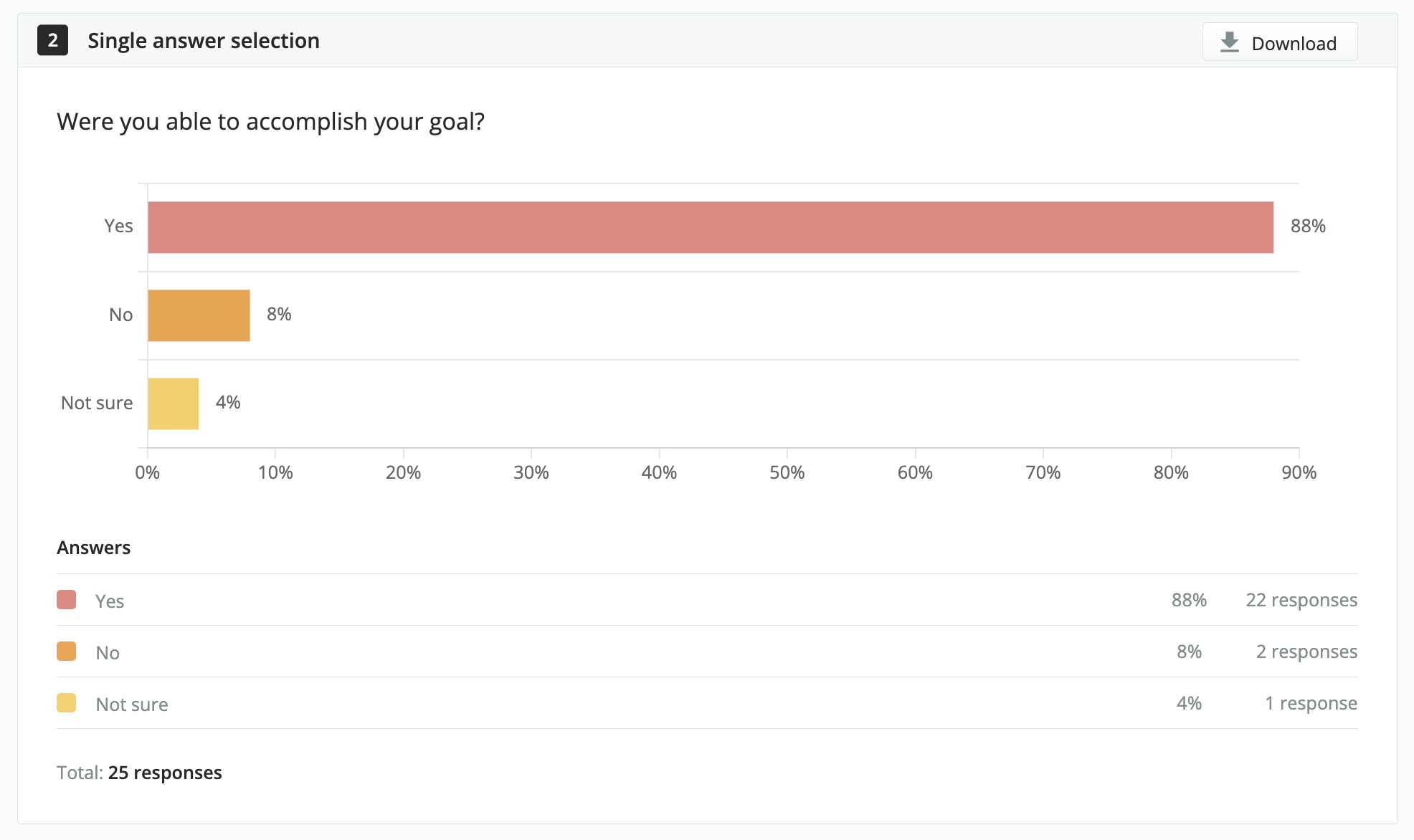
You’ll be able to look through all open-ended question answers one by one. By using one of our integrations, you can identify respondents with tags and attributes.
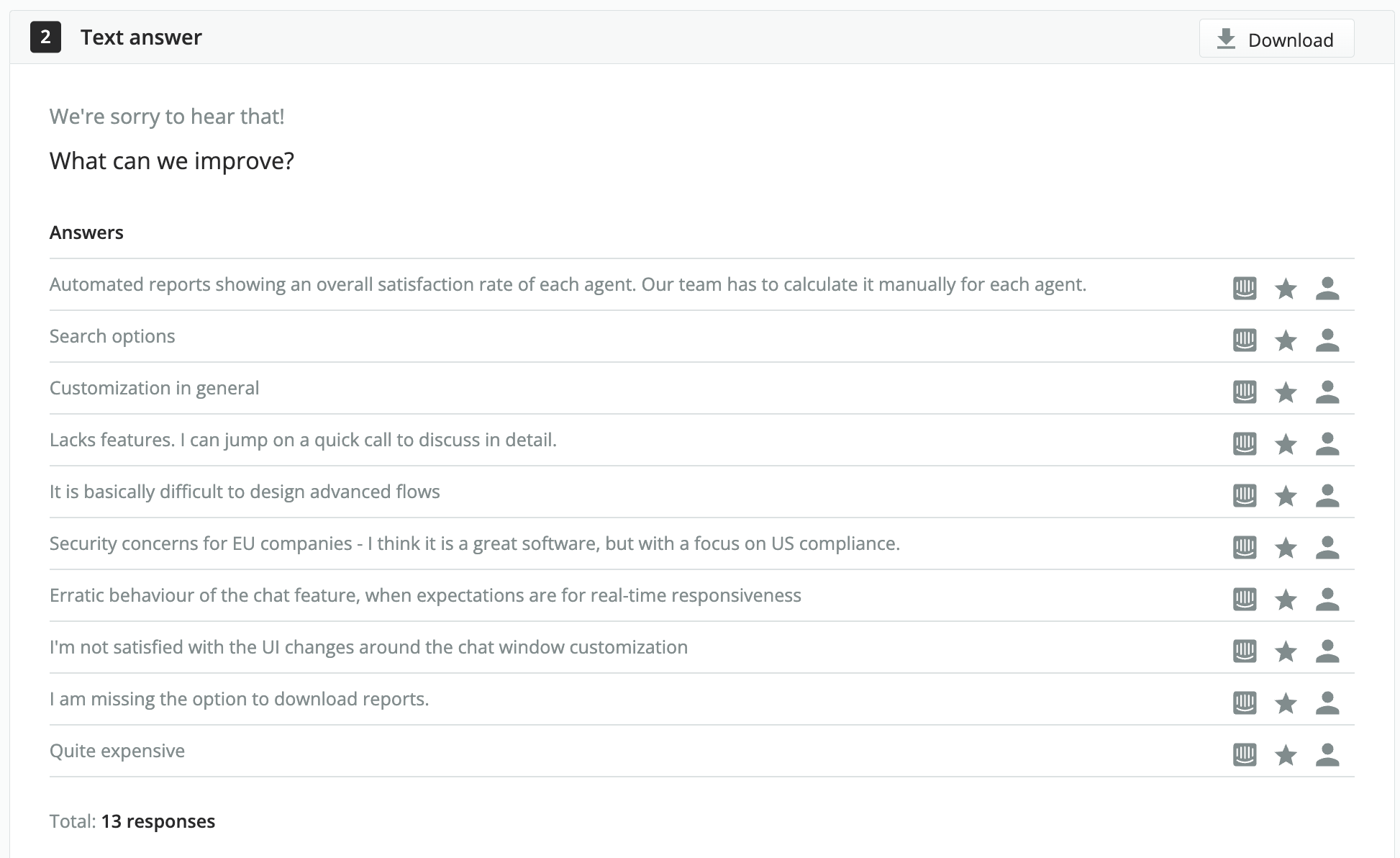
The interactive word cloud lets you exclude terms you aren’t interested in to nail down issues you are actively working on.
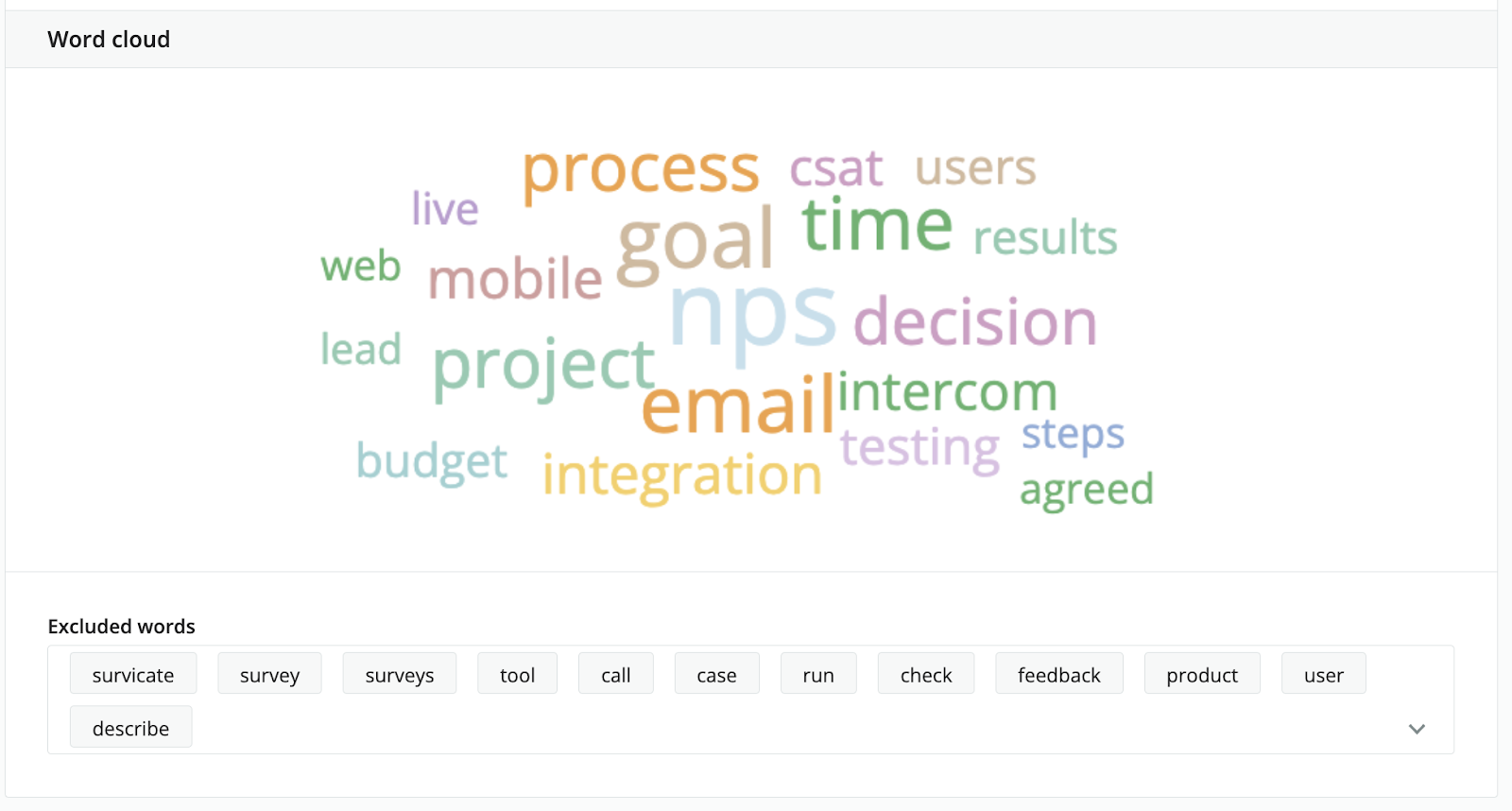
And lastly, we recommend you connect Survicate with Slack to receive real-time updates about the feedback you receive. That way, you can immediately address issues or even reach out to struggling customers.
Wrapping up
Analyzing product feedback regularly is vital to improving your company's success.
To get a sense of customer satisfaction and gain valuable insights from open-ended feedback, you'll need machine learning applications like Survicate to analyze your findings and gain valuable product insight.
Sign up free to launch your first survey and start receiving immediate responses. Our platform is user-friendly, requires no coding skills, and provides sophisticated analysis insights to help you turn gathered data into a marketing and product strategy.

.webp)






.svg)
.svg)
.svg)

.svg)


.svg)







.svg)




.svg)

















.svg)






























.svg)

.svg)
.svg)

.svg)



.svg)




.png)

.svg)

.svg)
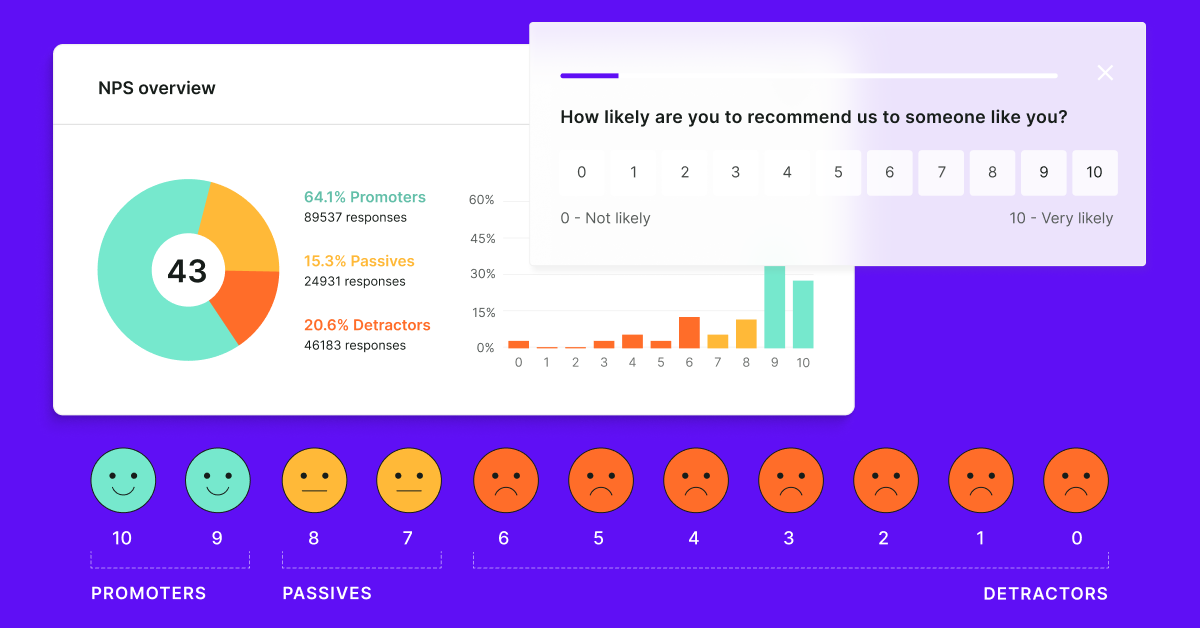

.png)

